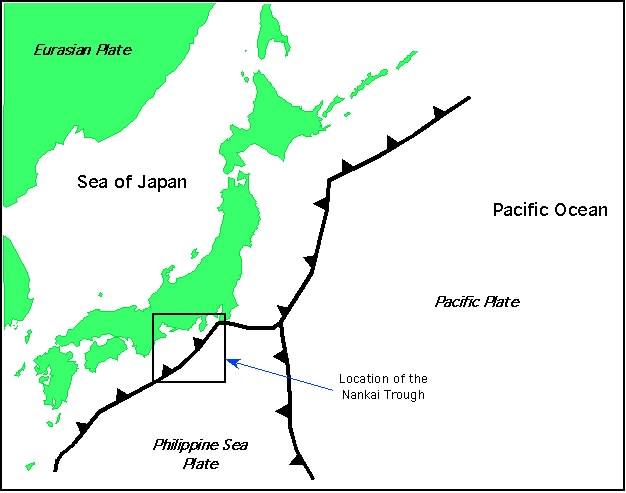Anniversaries of two catastrophic earthquakes: Kōbe in Japan (1995) and Haiti (2010)
The Kōbe earthquake in Japan took place 30 years ago and the Haiti earthquake 15 years ago.
The Kobe earthquake, or the Great Hanshin earthquake as it is also known, occurred on 16 January 1995 at 20:46 Universal Time (= 17 January 05:46 local time) with a magnitude of 6.9. The source of the earthquake (34.58°N, 135.01°E) was in the north of Awaji Island, about 20 km from the city of Kobe, which has a population of 1.5 million. The depth of the earthquake was 22 km. The affected Nojima fault zone directly crossed the city of Kobe. The horizontal displacements were up to 1.5 metres and caused the structural failure of the bridge piers of the elevated motorway. There were 6,434 fatalities and 310,000 people were evacuated. Over 200,000 buildings were damaged or destroyed. There were numerous sources of fire due to broken gas pipes. Many transport links were interrupted, and Kobe's elevated motorway, which was overturned over a length of 5 km, showed the limits of construction methods at the time. The damage caused was estimated at 100 billion US dollars. Alongside the great Kantō earthquake in Tokyo in 1923, the quake was the worst in Japan in the 20th century.
On 12 January 2010, at 21:53 world time (16:53 local time), a magnitude 7.0 earthquake shook the impoverished Caribbean state of Haiti. The epicentre (18.44°N, 72.57°W) was only 25 kilometres from the capital Port-au-Prince, which had a population of around 1.3 million at the time. The effects were devastating due to the low building standards and a shallow focal depth of 13 kilometres. Due to the chaotic conditions, it was almost impossible to accurately record and identify the fatalities, meaning that the number of victims could only be estimated. According to the government, the death toll totalled around 316,000 and millions of people were left homeless. 100,000 houses were destroyed and 190,000 damaged. This was the most devastating earthquake in the history of North and South America and the most devastating earthquake in the world in the 21st century.
What the two island quakes had in common was that they had roughly the same magnitude, the source of the quake was at a shallow depth and they were located in high-risk quake regions near harbour cities with more than 1.3 million inhabitants. However, 50 times as many people died in the Haiti quake than in Japan.
In the highly developed industrialised country of Japan, preventive action is taken in advance to counter the high risk with earthquake-proof buildings that meet earthquake standards. In comparison, Haiti, which is one of the least developed countries, was unable to take such precautions due to its weak economy and unstable political situation.
Safety precautions had already been taken before the earthquake in Kobe and buildings were constructed using earthquake-proof construction methods. After the Kobe earthquake, however, confidence in earthquake-proof construction was deeply shaken. The bridge piers of the elevated motorway, for example, were unable to withstand horizontal displacements of 1.5 metres. But in addition to toppled tower blocks and collapsed buildings, many houses remained unscathed. Since then, preventative measures have been continuously improved. Earthquake drills are held twice a year in schools, emergency packs are sold in shops and residents are encouraged to secure their furniture in their homes. Since the major quake in Tohoku in 2011, all phones have had a pre-installed alarm that emits a warning a few seconds before the earthquake waves arrive. The logo is a picture of a catfish, Namazu, the mythological cause of earthquakes. A museum commemorating the 1995 earthquake has also been set up in Kobe and memorial sites with original damage can be visited.
The Japanese government issued a warning of a possible mega-earthquake for the first time last year following the Hyuga-nada earthquake, which occurred on 8 August 2024 with a magnitude of 7.1 on the Richter scale. The basis for this warning was the location of the hypocentre and the fear that the event could activate a quake in the area of the Nankai Trough Fault Zone. Megaquakes have been known to occur in the region since the 17th century (Ansei Tokai, 1707; Ansei Nankei, 1854; Showa Tonkai, 1944; Showa Nanakai, 1946). All quakes had magnitudes greater than 8 and, in the event of a recurrence, strong tremors in the densely populated regions of Kanto and Kyushu and a tsunami are to be expected. The metropolis of Kobe would also be affected. Based on the warning, trains are running more slowly on certain sections of the line and some night trains have been cancelled completely. Residents of the endangered areas have the opportunity to prepare and can still anchor furniture and study escape routes.
In comparison, reconstruction in Haiti progressed very slowly due to another quake in 2021, which claimed more than 2,000 lives, and the precarious political situation. Nevertheless, with the support of the United States Geological Survey (USGS), a certain level of awareness was also created there and, among other things, bricklayers were trained in earthquake-proof construction methods. A seismological department was set up at the Bureau des Mines et de l'Energie (BME), which operates the country's first seismic monitoring network together with the USGS. As soon as an earthquake is registered by the sensors, the data is transmitted to the BME and an initial risk assessment can be carried out.
Seismological Service of Austria - GeoSphere Austria
Hohe Warte 38, A-1190 Vienna
Tel. +43 1 36026 2508
E-Mail: seismo@zamg.ac.at
Translated with DeepL.com (free version)

